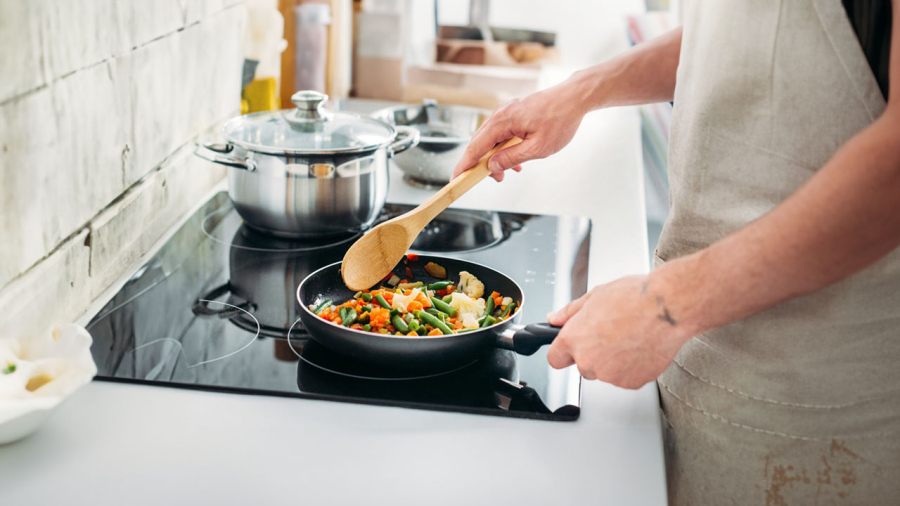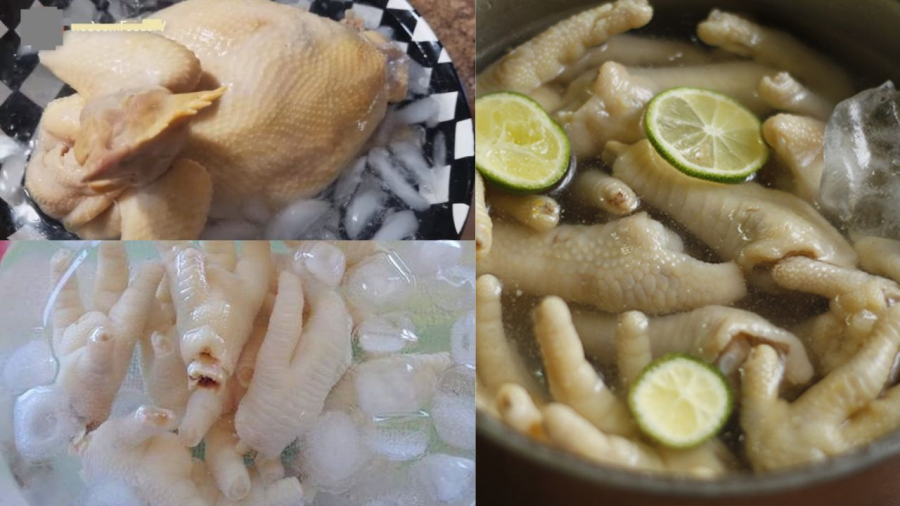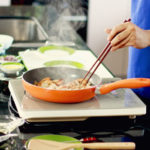Thermal Shocking: A Versatile Cooking Technique for Enhancing Flavor and Texture

Thermal shocking is a versatile cooking technique that can be applied to a wide range of dishes
Thermal shocking involves subjecting food to a sudden change in temperature, typically by either immersing it in boiling water or plunging it into ice water. This technique serves several purposes, including:
- Enhancing crispiness and texture
- Preserving natural colors
- Improving flavor
Thermal Shocking for Chicken
Traditionally, chicken is poached in cold water, which results in the meat gradually cooking and releasing its nutrients into the broth. While this method produces a flavorful broth, the chicken itself may become dry and bland.

Thermal shocking can enhance the flavor and appearance of boiled chicken
Thermal shocking chicken involves two steps:
- Bring water to a boil and pour it over the chicken. This will tighten the skin and prevent it from tearing.
- Reduce the heat and simmer the chicken until it is just cooked through. Removing it from the heat prevents overcooking and keeps the chicken tender.
- Immediately submerge the chicken in ice water. This will further tighten the skin and result in a more flavorful and juicy finished product.
Thermal Shocking for Offal (Pig’s Stomach and Intestines)
Thermal shocking is essential for preparing offal dishes that are tender, flavorful, and free of impurities.
To prepare offal using thermal shocking:
- Bring water to a boil and add crushed ginger for aroma.
- Add the offal and use a pair of chopsticks to submerge it.
- Once the water returns to a boil and the offal is cooked to your desired doneness, remove it and immediately plunge it into ice water.
- Repeat the process to ensure complete cooking and tenderization.
Thermal Shocking for Vegetables
Thermal shocking is also commonly used to enhance the flavor and texture of vegetables.
To thermal shock vegetables:
- Bring a pot of water to a boil and add a pinch of salt to preserve nutrients.
- Add a dash of oil to create a barrier that protects the vegetables’ color.
- Submerge the vegetables in the boiling water and cook for a short time.
- Immediately remove the vegetables and plunge them into ice water to stop the cooking process.
Thermal Shocking for Fried Foods
Thermal shocking can also result in crispy and flavorful fried foods.
- Partially fry the food (70% cooked).
- Remove the food and submerge it in cold water.
- Remove the food from the water, drain it, and refrigerate or freeze it.
- Re-fry the food until golden brown and crispy.
Thermal Shocking for Poached Meats
Thermal shocking can prevent poached meats from becoming dull and unappetizing.
- Boil the meat until cooked through.
- Immediately plunge the meat into ice water to tighten the skin and retain moisture.
- Remove the meat from the water, pat it dry, and refrigerate it to enhance its texture.
Thermal Shocking for Easy-to-Peel Eggs
Thermal shocking can also make peeling hard-boiled eggs a breeze.
To thermal shock eggs:
- Bring water to a boil and gently lower the eggs into the water.
- Boil the eggs for the desired doneness (6-12 minutes, depending on your preference).
- Immediately transfer the eggs to ice water to stop the cooking process and facilitate peeling.
In conclusion, thermal shocking is a versatile and effective technique that can dramatically improve the flavor, texture, and appearance of various dishes. By subjecting food to extreme temperature changes, you can achieve culinary results that are both impressive and delicious.
This technique serves multiple purposes: it enhances crispiness and overall texture, preserves natural colors, and improves flavor. For example, with chicken, thermal shocking tightens the skin, preventing it from tearing and resulting in juicier meat.
- Pour boiling water over the chicken to tighten the skin.
- Simmer the chicken until just cooked to prevent overcooking and keep it tender.
- Immediately submerge the cooked chicken in ice water for a more flavorful and juicy finish.
Yes, thermal shocking is excellent for preparing tender and flavorful offal, free of impurities. Boil water with crushed ginger for aroma, add the offal, and once cooked to your desired doneness, immediately plunge it into ice water.
Absolutely. Bring a pot of water to a boil with a pinch of salt to preserve nutrients and a dash of oil to protect the vegetables’ color. Briefly cook the vegetables and then immediately plunge them into ice water to stop the cooking process and lock in flavor and texture.
Yes. Partially fry foods (about 70% cooked), then submerge them in cold water. Once drained and refrigerated or frozen, fry them again until golden brown and crispy.
Thermal shocking is perfect for preventing poached meats from becoming dull and dry. After boiling the meat, immediately plunge it into ice water to tighten the skin and retain moisture. Then, pat it dry and refrigerate to enhance its texture.
Definitely. Lower the eggs into boiling water and cook for your desired doneness. Then, immediately transfer them to ice water to stop the cooking process and make peeling a breeze.
Preparing Yellow Apricot Flowers to be in Full Bloom for Tet Celebration
As the Lunar New Year quickly approaches, many families are looking for guidance when it comes to selecting, purchasing, maintaining, and decorating with beautiful golden apricots. To ensure you get the most out of this lovely tradition, this article will provide you with specific instructions for choosing, caring for and decorating with yellow apricot blossoms. Learn how to make the most of this iconic symbol of the Tet holiday season!
Reap Delicious Results Through Perfect Dual-Fire Cooking
Ready to add some flavor to your cooking? Make use of the dual heat cooking technique for an elevated meal-prep experience. Discover the secrets to creating fragrant and flavorful dishes with this simple yet effective cooking method.



































